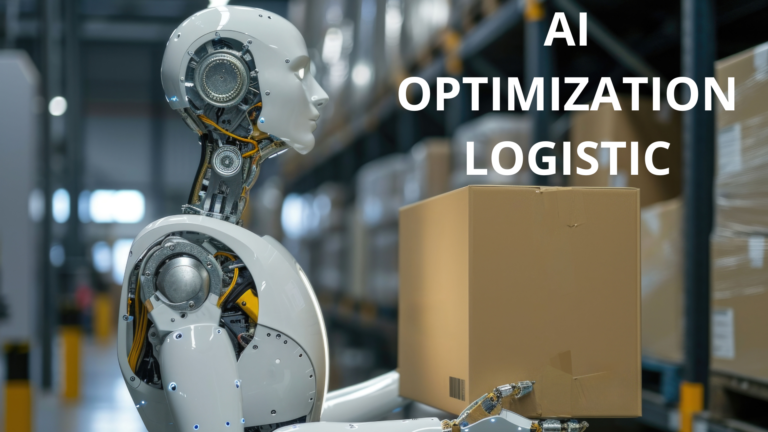Date of publication:
07 Feb. 24Labor Market on The Wave of Automation and AI
Technological advances in artificial intelligence and robotics are dramatically changing the labor market. The automation of many processes is leading to the disappearance of some professions and the emergence of others. To successfully adapt to the new reality, you need to understand current trends and prepare for future changes.
Impact On The Labor Market
The rapid development of artificial intelligence and robotization technologies is already having an active impact on the labor market, shaping new employment trends.
- Automation of routine tasks. One key trend is the mass automation of simple repetitive tasks, such as assembly on an assembly line or data entry. Many jobs involving routine physical and mental labor are disappearing, displaced by automated systems.
- New technology-based occupations. In parallel, there is a demand for promising new occupations related to the development and maintenance of smart technologies. There is a growing need for qualified engineers and programmers in robotics, artificial intelligence, and big data processing.
- Risks of displacement of people from the work process. The prospect of mass unemployment due to the complete replacement of human labor by machines is a cause for concern. Professions based on standardized tasks with data or physical work are particularly vulnerable.
- The importance of timely requalification. To avoid negative consequences, it is crucial to retrain people in advance for more in-demand specialties. Companies should provide opportunities for upskilling so that workers can learn new skills and technologies.
Promising Areas Of Application
Artificial intelligence technologies are actively used in a wide variety of areas, transforming the processes we are accustomed to. For example, the introduction of AI is fundamentally changing such areas as transportation and industry. Let’s take a closer look at these aspects:
- Autonomous transportation. Development of unmanned cars, ships, trains. Artificial intelligence makes them safer and more efficient.
- Industrial and service robots. Robotization of production, warehouses, agriculture. Creation of service robots for cleaning, delivery of goods, household services.
- Artificial intelligence in medicine. AI helps make diagnoses, develop medicines, make forecasts. Robots are actively used in surgery.
- Automation in manufacturing. Automated quality control systems, predictive analytics to prevent breakdowns, optimization of logistics and inventory management.
Regulating The Use Of Technology
The widespread adoption of advanced technologies requires clear rules and regulations to minimize risks and negative consequences. It is important to establish a framework for the ethical and responsible use of artificial intelligence and robotic technologies, while prioritizing human safety. The use of potentially dangerous technologies, such as autonomous weapons systems, should be restricted by law. It is also necessary to regulate the sphere of data protection and privacy in the implementation of intelligent technologies. Mechanisms should be developed to guarantee the protection of personal information and prevent discrimination against people on the basis of data analysis. The social impact of automation must be taken into account and unemployment and inequality must not be excessively increased. This can be done through quotas on the number of jobs to be automated, retraining, and shortening the working week. Effective regulation should be based on international cooperation and feedback from society. Transparency and public scrutiny will find the optimal balance for implementing advanced technologies for the benefit of people.
Job Preservation
The introduction of new technologies should not lead to mass unemployment. It is important to find a reasonable balance in which automation complements human labor rather than completely replacing it. One solution is to use robots and automated systems only for hazardous, harmful or routine tasks. This will save jobs in areas that require creativity, communication, and non-standard solutions.
Also promising is the creation of new jobs related to the maintenance of intelligent machines and robots. These can be engineers, operators, specialists in artificial intelligence training. To maintain employment, measures at the state level are necessary: support for retraining, reduction of the working week, automation quotas. It is important to take into account the opinion of trade unions and public organizations when introducing new technologies.
An integrated approach that takes into account the interests of workers will avoid mass unemployment. People will be able to concentrate on creative and socially important tasks, shifting the routine to automated systems.
Developing Education And New Skills
To prepare people for technological changes in the labor market, it is necessary to reform the education system and develop in-demand skills of the future.
- First, educational programs should be more flexible and interdisciplinary, providing a set of versatile competencies. In addition to professional knowledge, it is important to develop creativity, the ability to make non-standard decisions, and emotional intelligence.
- Secondly, it is necessary to actively implement programs to study digital technologies and artificial intelligence. Programming skills, data handling skills, and understanding of robotics principles should be mandatory.
- Third, the most important priority is training in self-education and continuous learning. People must be prepared to regularly learn new professions in response to changing labor market demands.
Education reform will require considerable effort and investment. Teacher training programs, modernization of material and technical base, and development of online education are needed. Government and business must join forces to give people the skills to succeed in the new environment. The importance of flexibility and adaptability. To remain relevant in the face of rapid technological shifts, workers need to be flexible and adaptable to change. Qualities such as openness to earning, mobility, stress tolerance, and the ability to deal with uncertainty are important. Companies also need to become more flexible to quickly reorganize business processes and business models in response to technological shifts. New approaches to personnel management and work organization are required. Only a proactive attitude, constant self-development and readiness to change will allow professionals and organizations to remain competitive in the new environment. Technological progress is radically changing the labor market. For this change to be positive, all participants must be flexible and strive for continuous development.
The Importance Of Flexibility And Adaptability
To remain relevant in the face of rapid technological shifts, workers need to be flexible and adaptable to change. Qualities such as openness to learning, mobility, stress tolerance, and the ability to deal with uncertainty are important.
Companies also need to become more flexible to quickly reorganize business processes and business models in response to technological shifts. New approaches to personnel management and work organization are required.
Only a proactive attitude, constant self-development and readiness to change will allow professionals and organizations to remain competitive in the new environment.
Technological progress is radically changing the labor market. For this change to be positive, all participants must be flexible and strive for continuous development.




